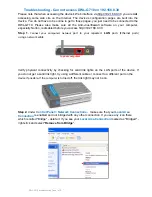
l
IS-IS Auto FRR should be configured so that service traffic between P nodes can be rapidly
switched to the TE tunnel when the direct link fails.
l
Traffic between P nodes should be transmitted only between the P nodes at the core layer
to prevent traffic between P nodes from going back to PE nodes.
NOTE
In this configuration example, PE1 and PE3 are used for illustration, only three P nodes of each plane at
the core layer are illustrated, and only the MPLS TE tunnel between P1 and P3 is illustrated. In real-world
situations, there are far more PE nodes, P nodes, and MPLS TE tunnels.
Configuration Roadmap
The configuration roadmap is as follows:
1.
Assign IP addresses to interfaces on each node, configure the loopback addresses that are
used as LSR IDs, and configure IS-IS to implement IP connectivity.
2.
Configure an MPLS TE tunnel between P nodes as the backup path in Loop-Free Alternate
(LFA) calculation.
3.
Enable forwarding adjacency and configure LDP over TE.
4.
Enable IS-IS Auto FRR so that traffic can be rapidly switched in the case of a link fault.
5.
Run the
undo isis lfa-backup
command on the interfaces that connect P nodes to PE nodes
to disable these interfaces from becoming the backup interfaces in LFA calculation and
prevent traffic between P nodes from going back to PE nodes.
Data Preparation
To complete the configuration, you need the following data.
Table 7-3
IP addresses of physical interfaces
Device Name
Interface and IP
Address
Remote IP
Address
Remote Device
P1
GE 1/0/0
10.1.1.1/30
GE 1/0/0
10.1.1.2/30
P2
P1
GE 2/0/0
10.1.2.1/30
GE 2/0/0
10.1.2.2/30
P3
P1
GE 3/0/0
10.1.3.1/30
GE 2/0/0
10.1.3.2/30
P5
P2
GE 2/0/0
10.1.4.1/30
GE 2/0/0
10.1.4.2/30
P4
P2
GE 3/0/0
10.1.5.1/30
GE 2/0/0
10.1.5.2/30
P6
P3
GE 1/0/0
10.1.6.1/30
GE 1/0/0
10.1.6.2/30
P4
HUAWEI NetEngine80E/40E Router
Configuration Guide - IP Routing
7 IS-IS Configuration
Issue 02 (2014-09-30)
Huawei Proprietary and Confidential
Copyright © Huawei Technologies Co., Ltd.
699
















































